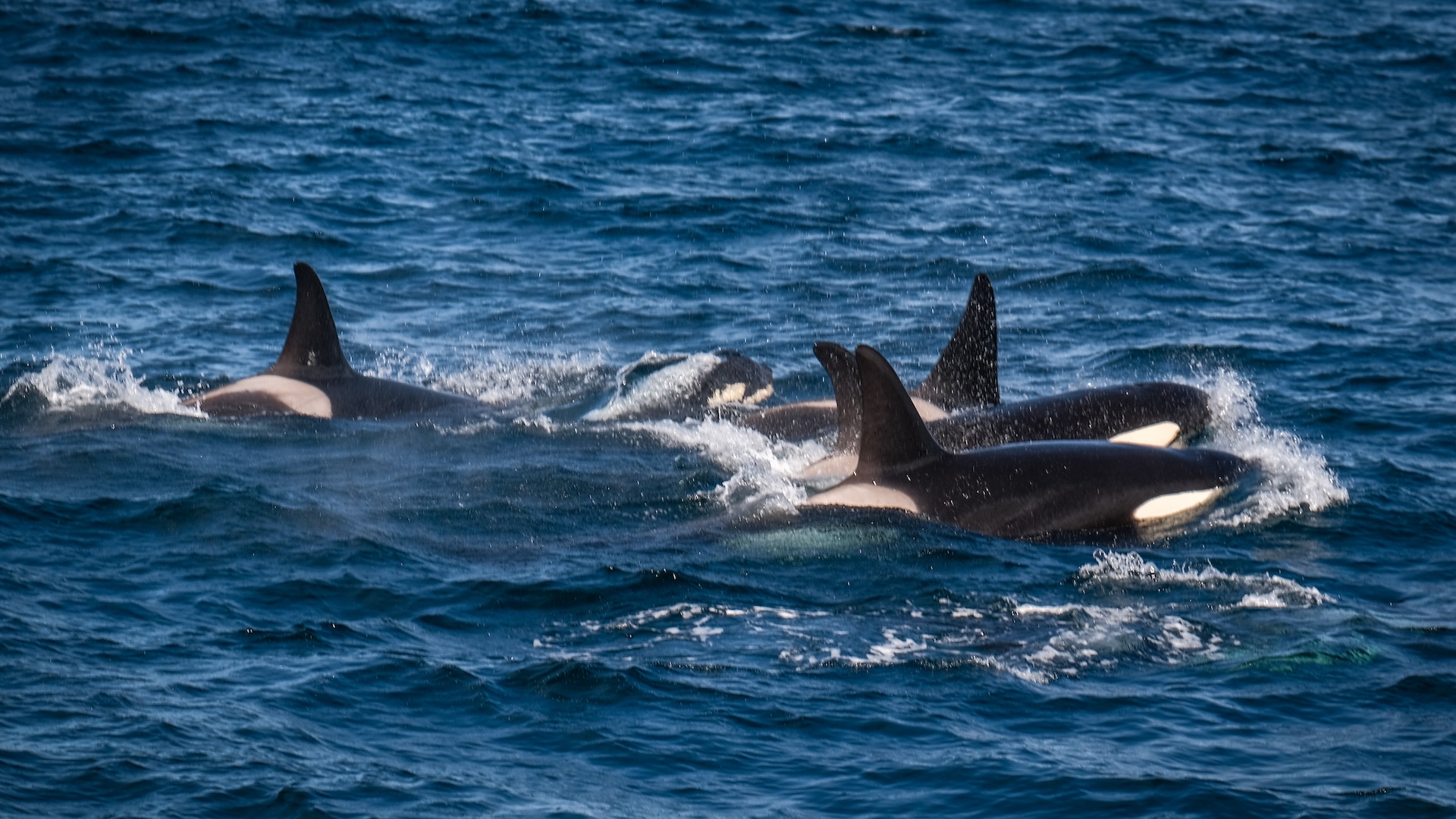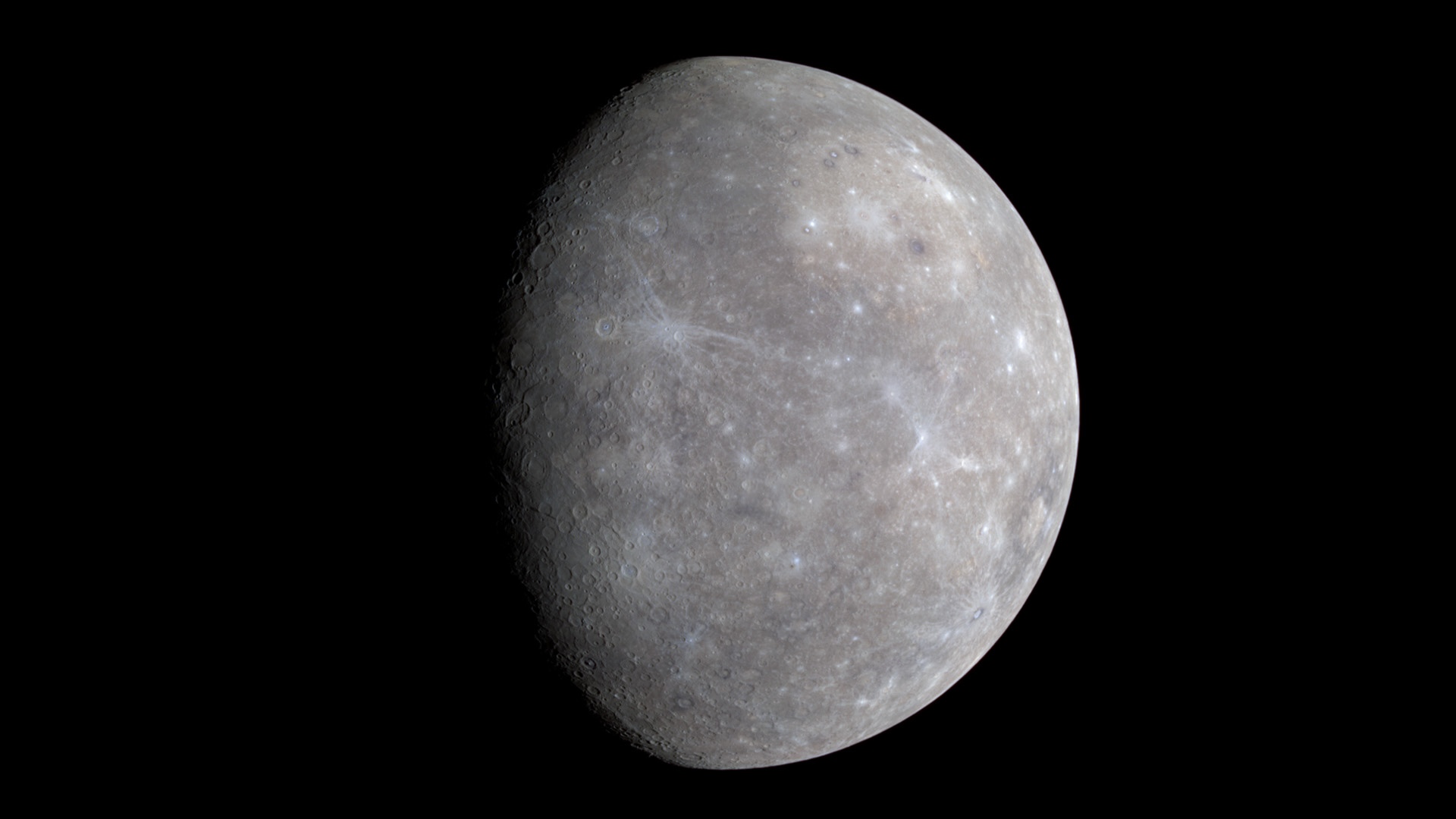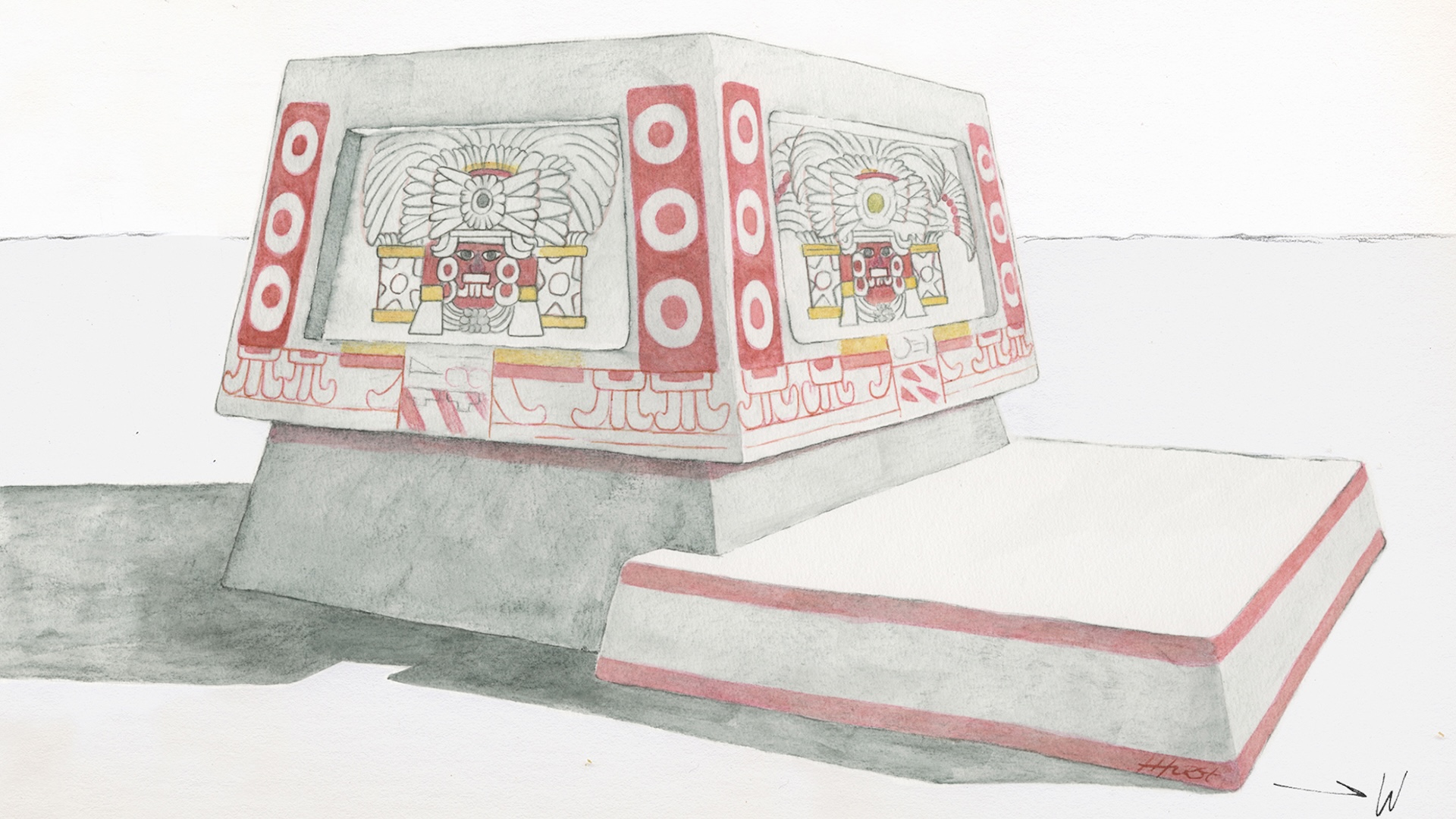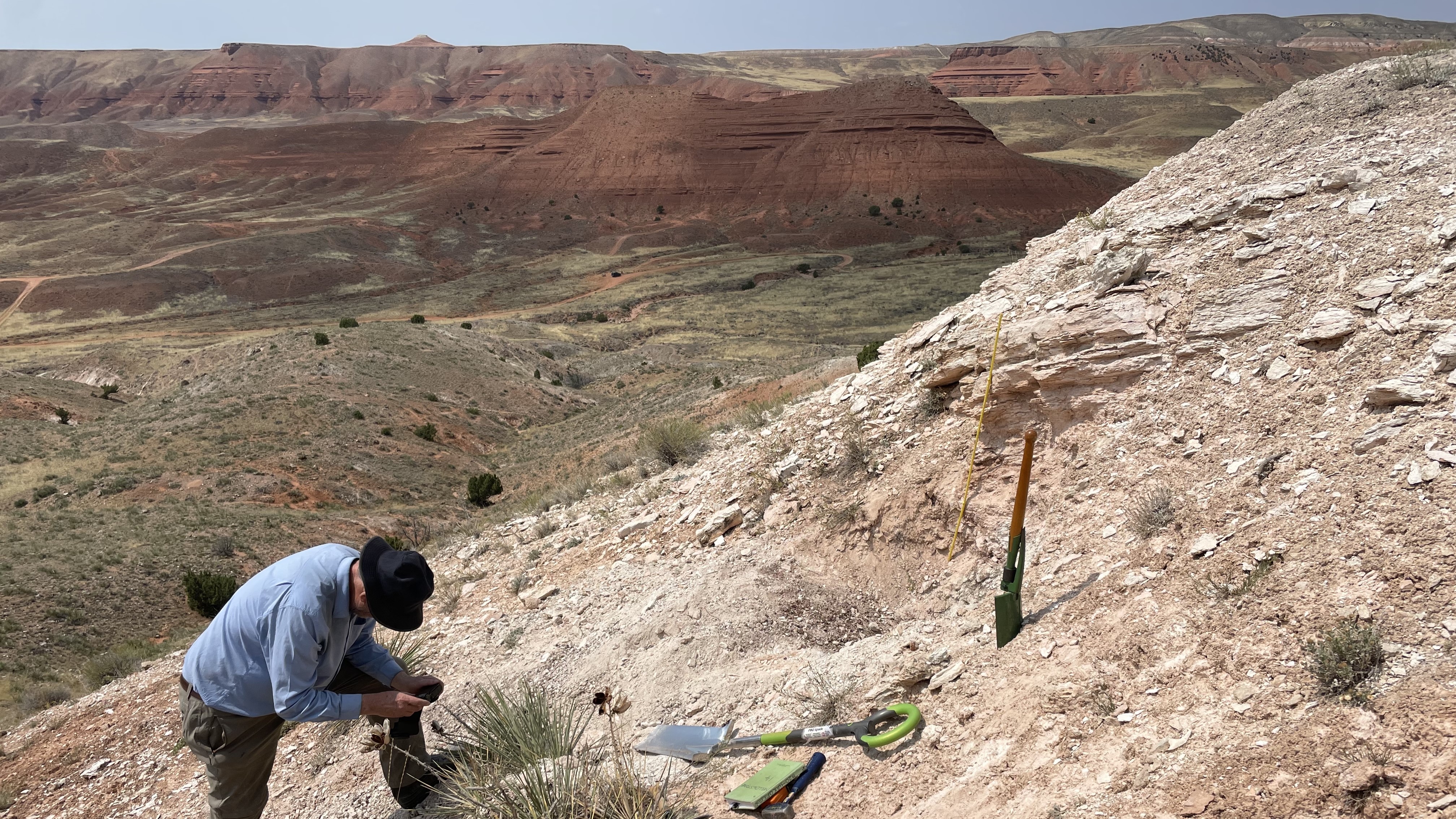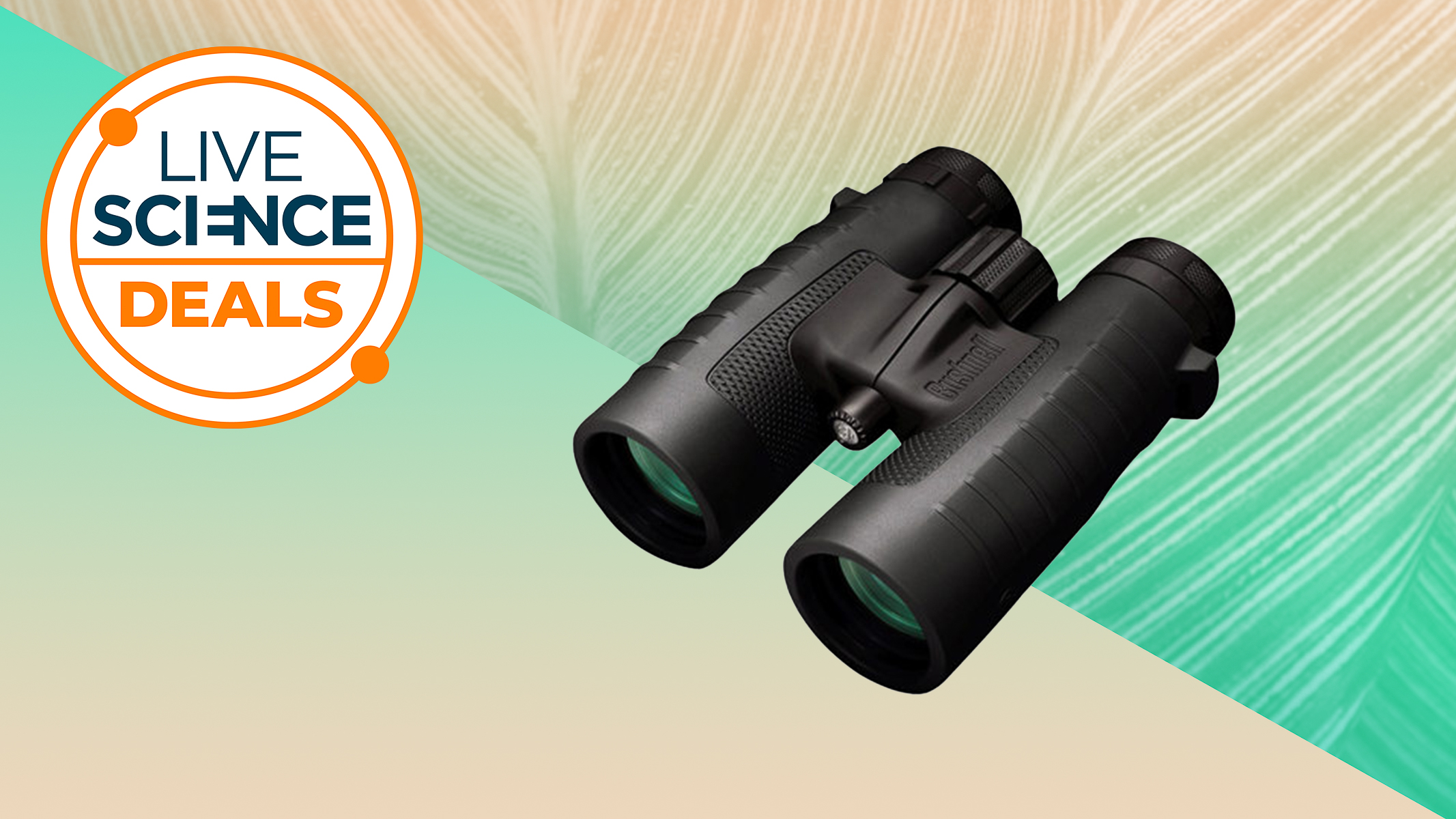Orca appears to adopt (or abduct) a baby pilot whale
Researchers have recorded an orca swimming with a pilot whale calf in a possible interspecies adoption, but how the two came together is a mystery.
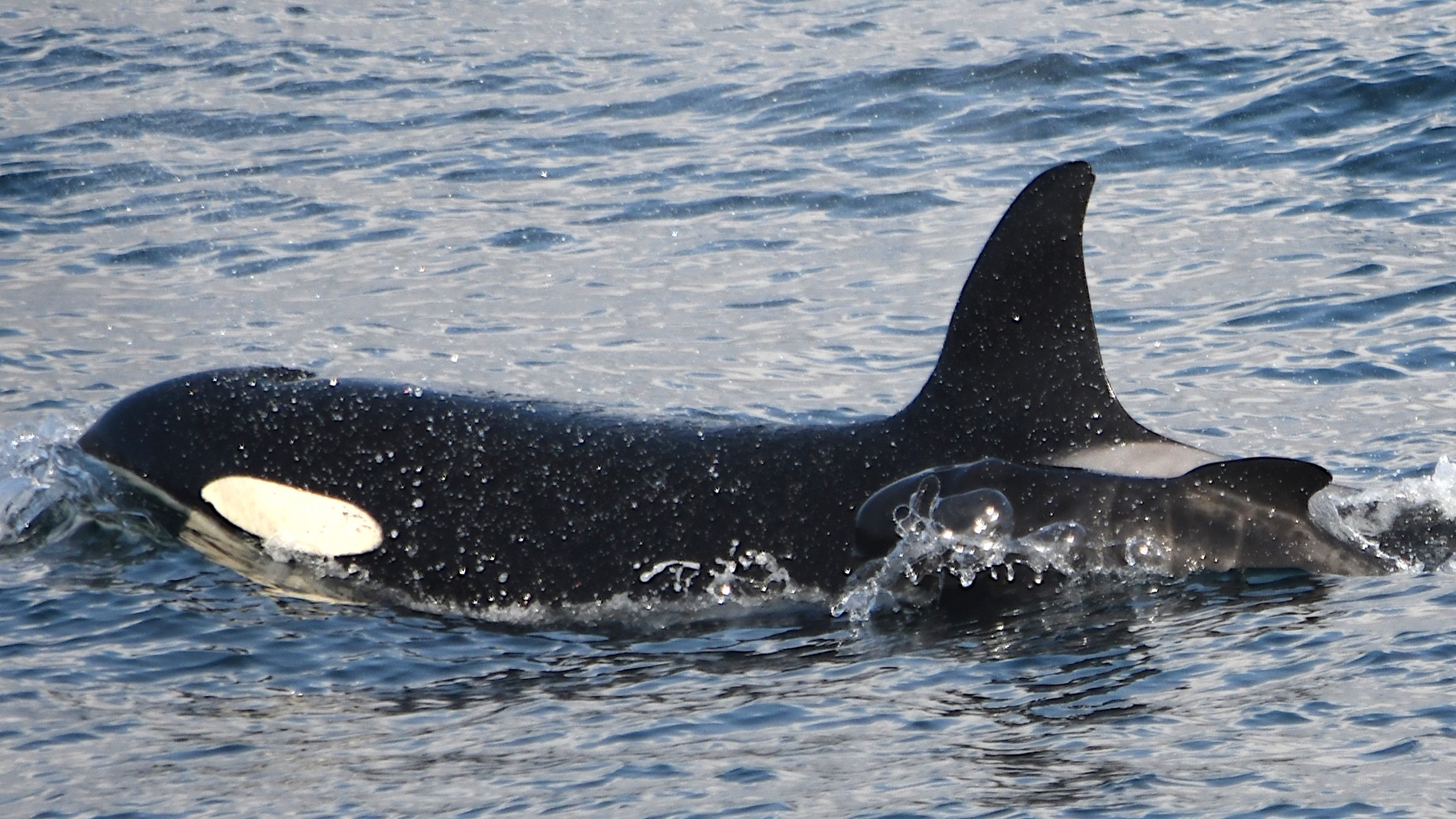
Researchers aboard a whale watching boat in Iceland were baffled in 2021 when they saw a female orca swimming alongside a very unusual calf. The tiny animal didn't have a white spot near its eye like orcas (Orcinus orca) do and, as it turned out, wasn't even from the same species.
Orca researcher Marie-Thérèse Mrusczok was working as the spotter on the top deck of the Láki Tours whale watching boat off the island's west coast when she sighted the orca and what she suspected was a pilot whale.
"You know what you're seeing, but your mind is saying, 'No, that can't be,'" Mrusczok, president of conservation nonprofit Orca Guardians Iceland, told Live Science. "When I came down from the top deck, the whole crew was like, 'Wow, this is the tiniest orca calf we have ever seen.'"
Mrusczok told the crew that it was no orca calf and, after consulting with other researchers, confirmed that they had seen a long-finned pilot whale (Globicephala melas) calf.
Mrusczok and her colleagues published their findings Feb. 17 in the Canadian Journal of Zoology in what may be the first documented case of an orca caring for the offspring of another species.
Related: Orca males are burnouts who let their moms do all the hunting, surprising study finds
The researchers watched the orca and calf for 21 minutes before the boat moved on. In that time, the orca, given the Icelandic name Sædís, appeared to be looking after the pilot whale.
Sign up for the Live Science daily newsletter now
Get the world’s most fascinating discoveries delivered straight to your inbox.
"She was showing protective behavior, and she was showing caregiving behavior towards the calf," Mrusczok said.
The calf, however, was in poor condition, and it's unlikely that Sædís was feeding it. Mrusczok noted that Sædís hasn't had any calves in the nine years the researchers have been studying her, possibly because she was too old and probably wasn't producing milk. When Sædís was spotted again in 2022, the calf wasn't with her.
Mrusczok noted that the calf likely died, but the researchers still had to figure out why the two were together in the first place. One possible explanation put forward in the study is that the orca came across a stray pilot whale calf and adopted it as a substitute calf.
Another, more sinister possibility is that the orca abducted the calf. Pilot whales will chase off orcas in Icelandic waters, possibly in response to food competition or a perceived predation risk. But Mrusczok observed something new when Sædís and her podmates were being chased by pilot whales in 2022. "Once the pilot whales stopped, the orcas would turn around and go back towards the pilot whales," Mrusczok said.
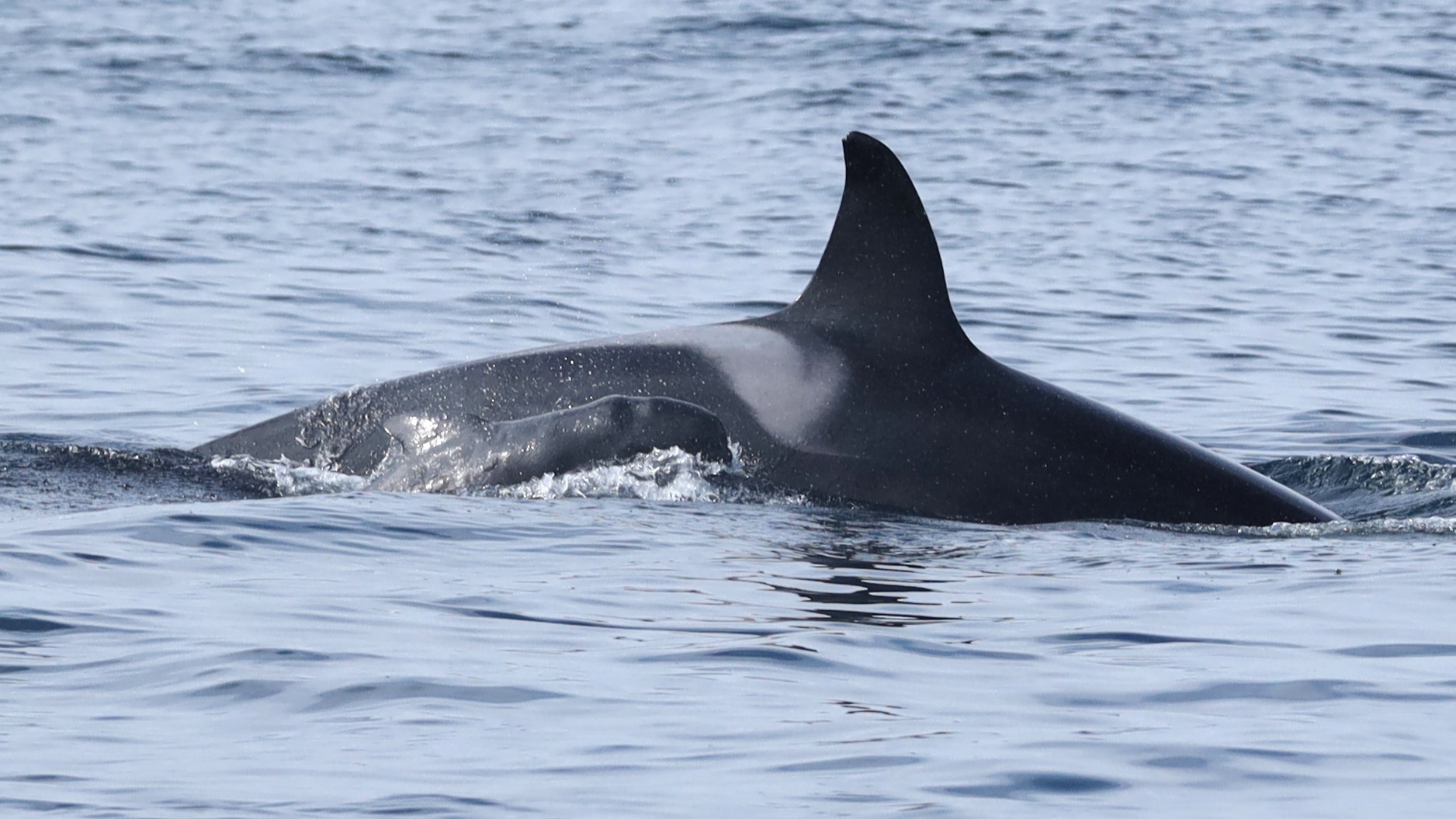
The study authors suggested that Sædís, now calfless, may have been repeatedly approaching the pilot whales to try to find another pilot whale calf she could take and that's why the pilot whales were chasing her off. Mrusczok noted that they are collecting data every year on the social interactions between these two species and hope to learn more in the future.
Erich Hoyt, a research fellow at Whale and Dolphin Conservation in the U.K. and author of "Orca: The Whale Called Killer" (Firefly Books, 2019), said that while the researchers' observations were nicely detailed, he found it difficult to draw as many conclusions as they did.
"The conclusions are a stretch for me," Hoyt, who was not involved in the study, told Live Science in an email. "I don't feel that there is enough evidence to say that the calf was actually adopted. This could just be curiosity on the part of the female killer whale having found a lost or abandoned pilot whale calf."

Patrick Pester is the trending news writer at Live Science. His work has appeared on other science websites, such as BBC Science Focus and Scientific American. Patrick retrained as a journalist after spending his early career working in zoos and wildlife conservation. He was awarded the Master's Excellence Scholarship to study at Cardiff University where he completed a master's degree in international journalism. He also has a second master's degree in biodiversity, evolution and conservation in action from Middlesex University London. When he isn't writing news, Patrick investigates the sale of human remains.



